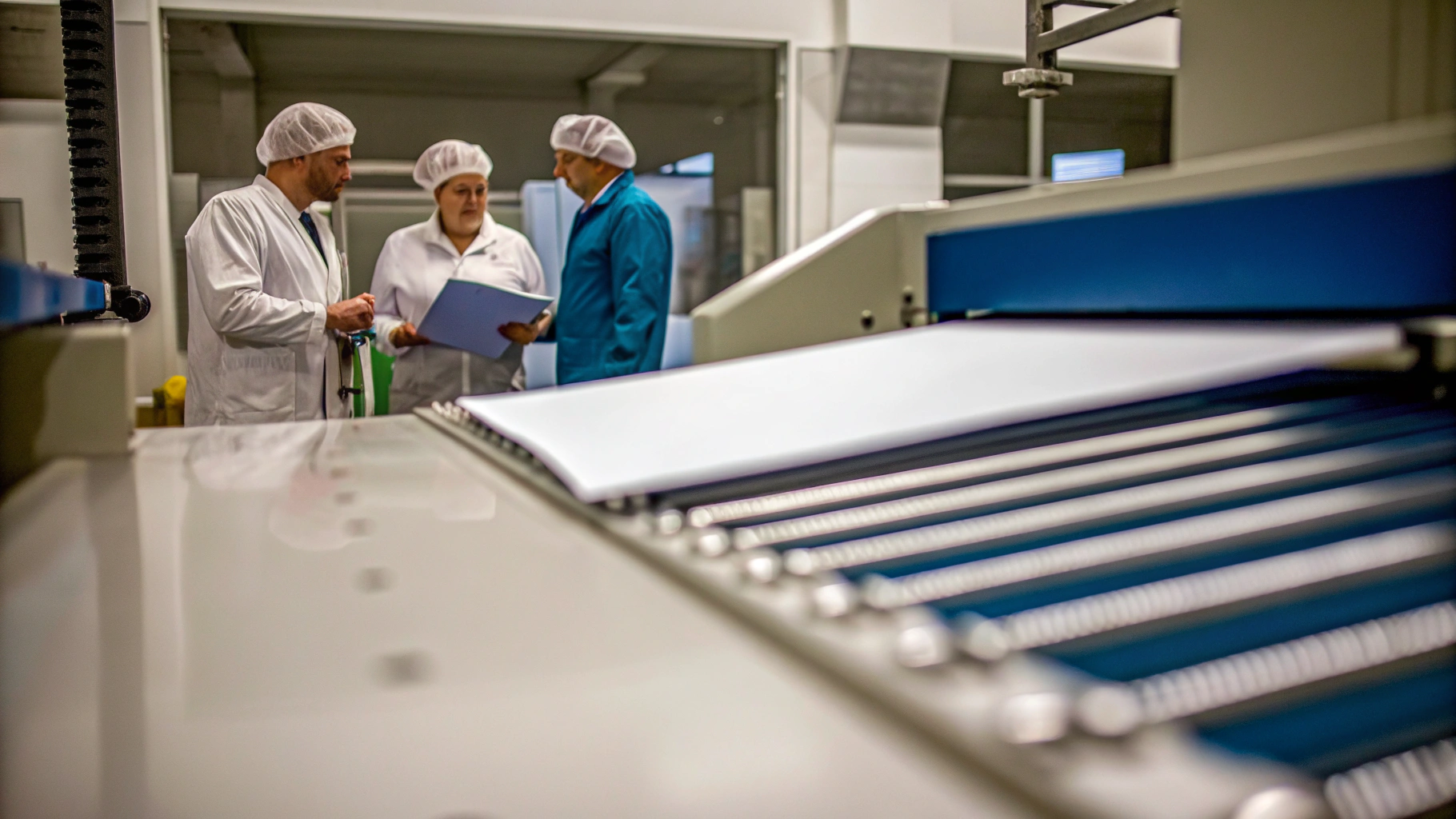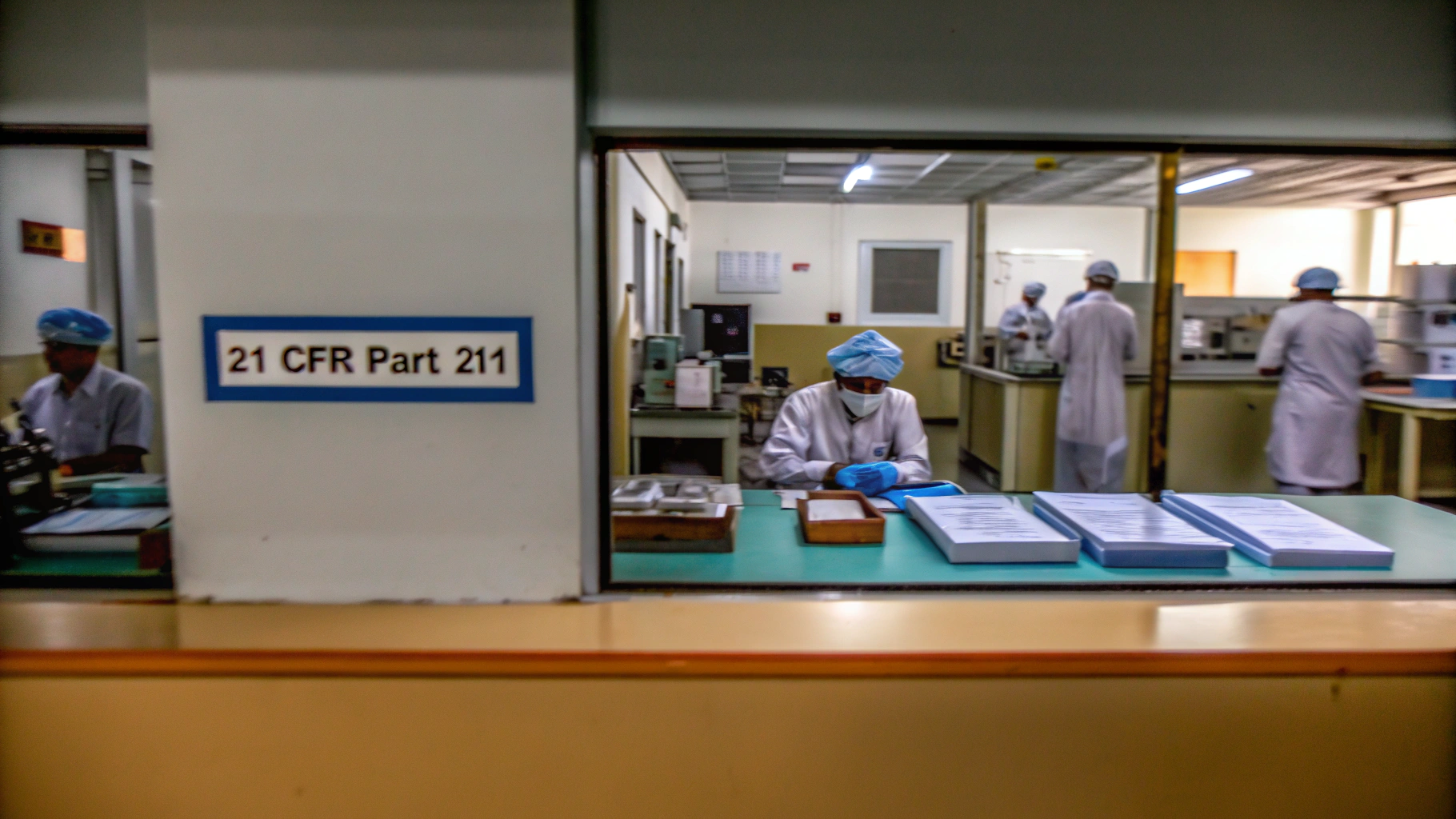4 Essential Practices for Mastering CFR 211 Compliance

Overview
The article focuses on four essential practices for mastering compliance with CFR 211, which governs Good Manufacturing Practices in pharmaceutical manufacturing. It highlights the critical challenges in achieving compliance and underscores the necessity of establishing robust control measures. Furthermore, it emphasizes:
- Ensuring thorough personnel training
- Implementing effective documentation practices
- Maintaining rigorous equipment validation
These practices are not merely procedural; they are fundamental for meeting regulatory standards and ensuring product safety and quality. By adopting these strategies, organizations can enhance their compliance posture and safeguard their operations.
Introduction
Navigating the intricate landscape of pharmaceutical manufacturing necessitates a profound understanding of regulatory frameworks, particularly 21 CFR Part 211, which delineates critical Good Manufacturing Practices (cGMP). Mastering these compliance requirements not only safeguards product quality but also enhances consumer trust and operational efficiency.
However, organizations frequently grapple with the complexities of documentation, personnel training, and equipment validation. How can companies effectively implement the essential practices that ensure compliance while fostering a culture of excellence? This inquiry is pivotal for organizations striving to elevate their operational standards and meet the rigorous demands of the industry.
Understand the Fundamentals of 21 CFR Part 211
The guidelines for current Good Manufacturing Practices (cGMP) in the manufacturing of finished pharmaceuticals are established by CFR 211, addressing critical aspects such as:
- Control measures
- Personnel qualifications
- Facility standards
A robust management system is not just a compliance necessity; it is vital for ensuring product safety and effectiveness. Key components of this regulation include the requirement for validated processes and meticulous documentation practices. For instance, adherence to 21 CFR 211.194 underscores the importance of thorough recordkeeping—if it’s not documented, it didn’t happen. This principle is essential for demonstrating compliance during evaluations and reviews, highlighting the significance of fostering a culture of excellence within organizations.
Understanding the complexities of CFR 211 enables companies to align their operations with regulatory expectations, significantly mitigating the risk of non-compliance. Effective implementation of cGMP regulations has been shown to enhance product standards and build consumer trust, which is crucial in a competitive market. Industry leaders emphasize that a commitment to excellence in management is an ongoing journey, not a one-time project. For example, the case of Baxter International illustrates the consequences of lapses in quality control, resulting in contamination issues that necessitated a reevaluation of their processes.
To successfully navigate these regulations, organizations should undertake a thorough review of CFR 211, identifying specific sections that are relevant to their operations. Developing a summary document that highlights these key areas can serve as a valuable reference for teams, ensuring that everyone is informed and aligned with regulatory requirements.

Identify Key Compliance Requirements in 21 CFR Part 211
Key compliance requirements in 21 CFR Part 211 include:
-
Establishing a control unit that functions separately from production is essential for supervising all facets of assurance. This independence is crucial for maintaining objectivity and integrity in quality assessments. Industry experts emphasize the importance of empowering quality units to detect issues early, underscoring the necessity of this separation.
-
Personnel Training: Ensuring that all personnel are adequately trained and qualified for their roles is vital. Current compliance rates in pharmaceutical production indicate that organizations striving for over 98% completion rates are more likely to uphold high standards of adherence. Documented evidence of training is essential to demonstrate compliance with legal requirements and prepare for potential audits.
-
Equipment Validation: All equipment used in production must undergo rigorous validation to ensure it operates correctly and consistently. This procedure is not merely a compliance necessity; it is a best practice that mitigates the risk of mistakes and flaws, thereby safeguarding product standards and patient safety.
-
Batch Records: Maintaining detailed batch production and control records is critical for ensuring traceability and accountability. These records must be readily accessible for regulatory inspections, with an emphasis on documenting all aspects of production to support adherence and quality assurance.
Actionable Tip: Create a regulatory checklist based on the key requirements of CFR 211. Regularly review and update this checklist to ensure continuous adherence and to respond effectively to any changes in regulations.

Implement Effective Documentation and Recordkeeping Practices
Implementing effective documentation and recordkeeping practices is crucial for maintaining compliance and operational efficiency. This process involves several key components:
- Standard Operating Procedures (SOPs): Develop and maintain SOPs for all critical processes, ensuring they are regularly reviewed and updated to reflect current practices.
- Electronic Recordkeeping: Utilize electronic systems for recordkeeping, enhancing the accuracy, security, and accessibility of documents.
- Audit Trails: Ensure that all electronic records include audit trails that track changes and modifications, providing necessary transparency and accountability.
- Retention Policies: Establish clear policies for document retention, specifying how long records should be kept and outlining the process for their disposal.
Actionable Tip: Conduct regular audits of your documentation practices to identify areas for improvement. Consider implementing a document management system that facilitates easy access and ensures compliance with regulatory requirements like cfr 211.

Establish Robust Training and Personnel Qualification Programs
To establish robust training and personnel qualification programs, organizations must prioritize several key practices:
-
Needs Assessment: Conduct a thorough evaluation of development needs to pinpoint gaps in knowledge and skills among employees. This foundational step ensures that instruction is tailored to address specific deficiencies, thereby enhancing overall competency.
-
Comprehensive Development Programs: Create development plans that encompass all facets of compliance, including Good Manufacturing Practices (GMP), documentation practices, and quality assurance. A well-rounded approach guarantees that employees possess the necessary knowledge to effectively meet regulatory standards.
-
Regular Refresher Courses: Implement regular refresher courses to keep staff informed about the latest regulations and best practices. Continuous education is vital in a rapidly evolving industry, significantly mitigating risks associated with outdated knowledge.
-
Evaluation and Feedback: Establish mechanisms for assessing program effectiveness and gathering participant feedback. This iterative process enables organizations to enhance their development programs, ensuring they remain pertinent and effective.
Actionable Tip: Create a schedule that outlines all required sessions, including dates, topics, and responsible instructors. This proactive approach is essential to ensure that all personnel receive the necessary training in a timely manner, thereby fostering a culture of compliance and excellence.

Conclusion
Mastering compliance with 21 CFR Part 211 is essential for any organization involved in pharmaceutical manufacturing. This article outlines four critical practices that not only ensure adherence to regulatory standards but also enhance product safety and quality. By focusing on:
- Understanding the fundamentals
- Identifying key compliance requirements
- Implementing effective documentation practices
- Establishing robust training programs
organizations can foster a culture of excellence that aligns with industry expectations.
The discussion emphasizes the importance of a strong management system that encompasses control measures, personnel qualifications, and meticulous recordkeeping practices. Organizations must prioritize:
- The independence of quality control units
- Comprehensive training for personnel
- Rigorous equipment validation
- Maintenance of detailed batch records
Each of these components plays a vital role in mitigating compliance risks and promoting accountability.
Ultimately, the journey toward mastering CFR 211 compliance is ongoing and requires a proactive approach. Regular audits, continuous education, and the development of clear documentation practices are essential strategies for staying ahead in a competitive landscape. By committing to these best practices, organizations not only comply with regulations but also build consumer trust and enhance their reputation in the marketplace.
Frequently Asked Questions
What is the purpose of 21 CFR Part 211?
21 CFR Part 211 establishes guidelines for current Good Manufacturing Practices (cGMP) in the manufacturing of finished pharmaceuticals, focusing on control measures, personnel qualifications, and facility standards.
Why is a robust management system important in pharmaceutical manufacturing?
A robust management system is essential not only for compliance but also for ensuring product safety and effectiveness, which ultimately helps to build consumer trust.
What is the significance of documentation in compliance with CFR 211?
Documentation is crucial as it supports the principle that if it’s not documented, it didn’t happen. Thorough recordkeeping is necessary for demonstrating compliance during evaluations and reviews.
How can companies mitigate the risk of non-compliance with CFR 211?
Companies can mitigate the risk of non-compliance by understanding the complexities of CFR 211, aligning their operations with regulatory expectations, and committing to a culture of excellence.
What are the consequences of lapses in quality control, as illustrated by industry examples?
Lapses in quality control can lead to significant issues, such as contamination problems, which may necessitate a reevaluation of processes, as demonstrated by the case of Baxter International.
What steps should organizations take to navigate CFR 211 effectively?
Organizations should conduct a thorough review of CFR 211, identify relevant sections for their operations, and create a summary document that highlights these key areas to keep teams informed and aligned with regulatory requirements.
